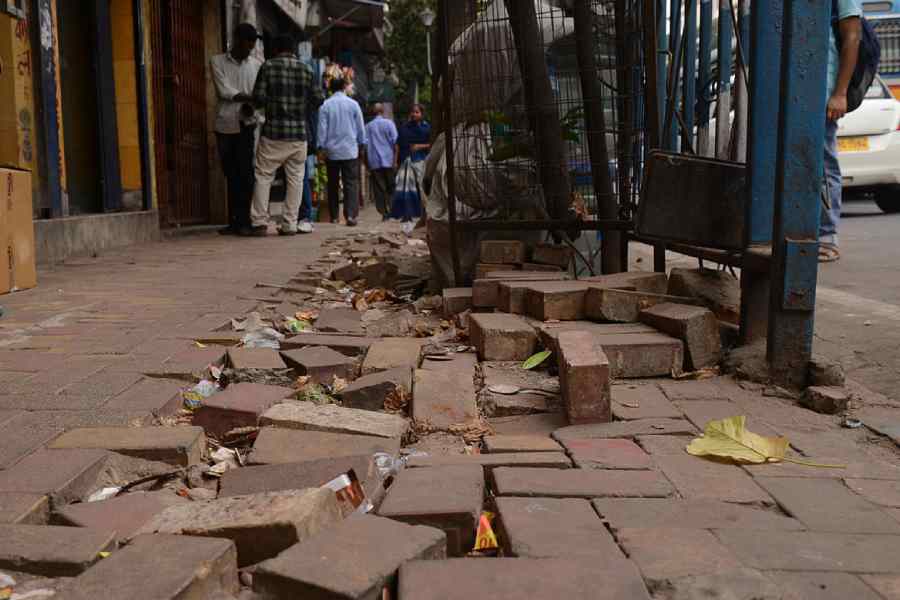Thirty years ago, Daniel Kahneman and his associates did a series of experiments that brought to light an interesting phenomenon. Students were shown movies with gory details. When the participants evaluated their experiences retrospectively, they remembered the peaks and the ends but did not pay much attention to how long they were in duress. The phenomenon, known as ‘duration neglect’, illustrates that we can get accustomed to unpleasant experiences till the time an even more obnoxious experience wakes us up from our stupor.
In our flailing democracy, we have gotten used to many horrors. One of these horrors — encroached footpaths — has been the bane of public infrastructure for decades. Calcutta’s central business district is, arguably, the ugliest among cities. This ‘accomplishment’ has been made possible by the hellhole that our footpaths have become.
There are many reasons for footpaths to exist. They contribute to our freedom to move around the city. Jane Jacobs, an activist for vibrant city neighbourhoods, had argued that cities need sidewalks (the American word for footpaths) for safety, contact, and assembling children. Wide, open footpaths mean fewer automobiles on the road and less pollution. Clean and unobstructed footpaths make people healthier. Footpaths also allow us to move in the city without the constant fear of being run over by vehicles. We also need footpaths when we are alighting from public transport; otherwise, we would have to get off right in the middle of the road. We also need footpaths for planting trees. Moreover, footpaths can help showcase the architecture and the heritage of a city. Well-demarcated and wide footpaths provide a continuous frontage for shops that connect products manufactured in villages with consumers. Finally, one look at a city’s footpaths can give us an idea about the quality of governance in a city, state or country.
The encroachment on footpaths in Bengal’s cities is a complex problem with more than one cause: population, unemployment, poverty, corruption, inept governance and vote-bank politics. It will require many years of hard work to address these root causes. There needs to be strict regulation in place to control the urban population. Hordes of people also descend upon cities, especially Calcutta, from neighbouring states, severely depleting their carrying capacities. Adding to the problem are the patrons of footpath vendors who are looking for low prices and cheap goods.
Our elected representatives and bureaucrats must learn from the experiences of other cities. The government needs to create a few prototypes of high streets that resemble the ones in London, Paris, Singapore, or New York. There is no shame in replicating what works. Experiencing these prototypes will convince the people about the benefits of good footpaths. The clearing of footpaths should not become a one-time exercise. A cadre of footpath police needs to be raised whose job will be to ensure encroachment-free pavements.
One might argue that the clearing of footpaths is a trivial exercise that treats the symptoms without addressing the disease. But the truth is that it will take many years to rein in urban populations, reduce unemployment, fire corrupt politicians, and instil civic sense in the people. We cannot wait till then. For many of us, both time and patience are running out.











